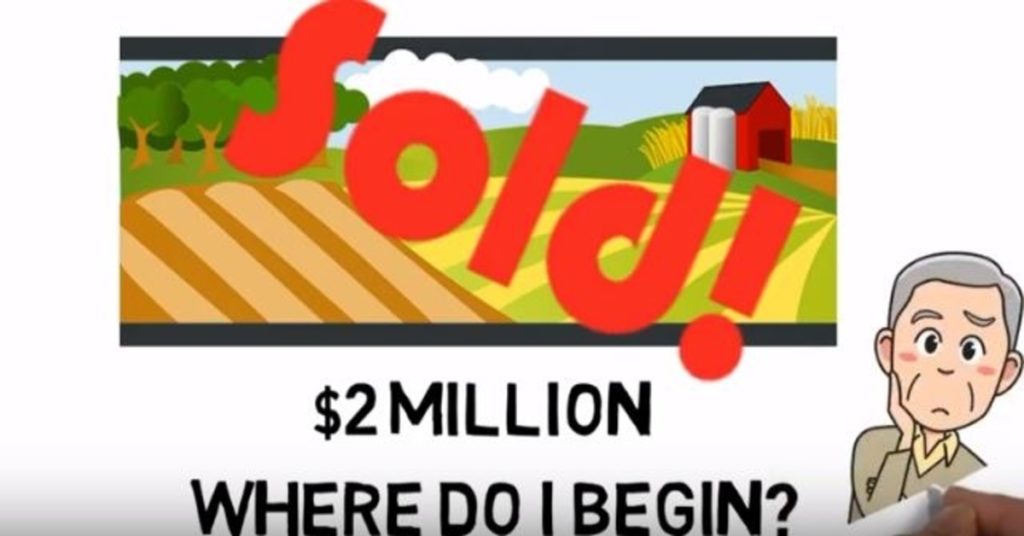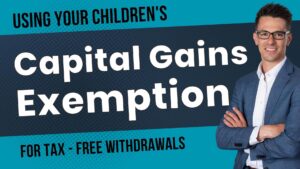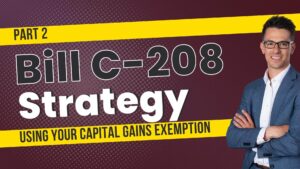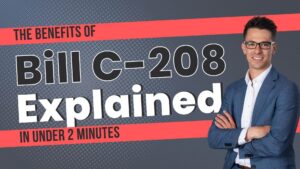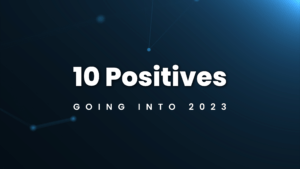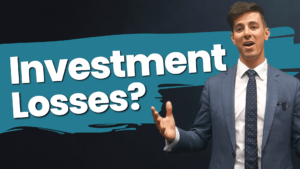You’ve done your tax and succession planning, you’ve had the big farm auction, and your farm is sold. You’ve given some money to the kids, you’ve paid off your debt, you’ve made a few charitable donations, and you’re left sitting with $2,000,000 in cash. Now you’re left wondering, “Where do I even begin with this money?”
Just the other day, I was speaking with a farmer and his number one concern was what to do with his proceeds when it came time to sell his farm. Hopefully, this video can help address concerns like these.
Define your goals
Investing isn’t as intimidating as it may seem. You can put together a simple portfolio like the one I’ll be going over today and, over time as you get more comfortable, you can always move to different investment options. But, for the purpose of today’s video, I’ll keep things simple.
Before you even think about investing, you’ll need to figure out what you’re hoping to get out of your portfolio. In other words, what are you looking to accomplish, what are your goals?
- Maintain your lifestyle: You’ve been living a modest lifestyle and you don’t expect that to change. You’d like $5,000/month of after-tax income.
- Preserve your capital: It’s also important for you to have a conservative portfolio. Having never invested outside of the farm, you don’t want to start complicating things and buying high-risk investments.
- Growth: Lastly, you’d like to maintain your purchasing power. You understand how inflation works and that $2,000,000 today won’t have the same buying power as $2,000,000 in ten years, so you’re looking for growth.
Build your portfolio
Now that we have your goals, let’s put together a portfolio.
First, let’s include the quarter section of land that you still own and didn’t sell. After all, land has historically been a good stable investment so why not keep a little. Depending on where you live in Manitoba, your quarter section is probably worth around $1,000,000 and can generate about $18,000/year of rental income.
Taking into consideration your wishes to have a conservative portfolio, I’d split your $2,000,000 into 3 pots:
- Pot 1 would be GICs. Using a conservative rate of return of 3%, this pot would generate $20,000/year.
- Pot 2 would include some bonds. Having a nice mix of long and short-term bonds can provide you with an annual income while also having the potential for long-term growth. Using a 3.5% interest rate, this pot would generate $23,000/year.
- For your last pot, I’d include some large blue-chip stocks that are paying dividends. This would give your portfolio a boost as stocks grow over time while also providing you with dividends throughout the year. Assuming a 3% dividend rate, this pot would generate $20,000/year in dividends.
Goals completed
When we add everything up, your portfolio is generating $81,000/year. If we assume you and your spouse are receiving CPP and OAS payments, this pushes your annual family income to over $95,000. After taxes you’re easily on track for your $5,000/month goal without touching any of your $2,000,000.
From an investment portfolio perspective, we’ve accomplished your goal of being conservative by only having 33% of your money in equities (a.k.a. stocks) and 66% of your money in fixed income investments like GICs and bonds. In the industry, we would consider anyone with an exposure of less than 40% to stocks to have a conservative investment profile.
Lastly, your portfolio will grow as your land, stocks, and bonds appreciate over time as they pass through different market cycles. This will allow you to keep up with inflation and maintain your purchasing power.
There you have it, here’s a simple portfolio that can check off everything on your wish list. It doesn’t need to be complicated or stressful.
Next steps
Your next move will be figuring out what accounts you use to buy these different investments. For example, should you buy your GICs in your TFSA, your RRSP? Your open account? Your corporation if you still have one? A combination? See one of our previous videos, Why your RRSP should grow as little as possible, for answers to these questions.
